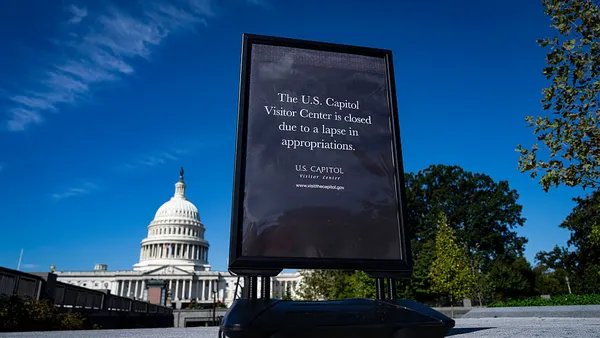“Earn-and-learn” opportunities — such as apprenticeships, pre-apprenticeships, internships and work-study programs — help workers gain in-demand skills and work experience while also earning a paycheck, according to a May 28 report from the Government Accountability Office.
Participants benefit through higher pay, low or no student debt and occupation-relevant education that leads to a credential, while employers benefit through higher employee retention and the ability to fill workforce gaps, GAO found.
“Many workers look to develop skills while maintaining self-sufficiency and meaningful employment,” according to the GAO report. “Some workers accomplish this through earn-and-learn opportunities, which provide practical experience that can help them gain needed skills to progress in their career.”
In particular, Registered Apprenticeship Programs combine a mix of on-the-job-training, mentorship and classroom-based instruction as part of employment. Several federal agencies administer programs to support RAPs, especially in high-demand industries such as construction, healthcare and skilled trades.
GAO found at least 26 programs across five federal agencies (U.S. Departments of Commerce, Defense, Education, Labor and Veterans Affairs) that could employ earn-and-learn opportunities.
During fiscal year 2024, 940,000 workers participated in RAPs across industries such as construction, healthcare, technology, energy and advanced manufacturing. Participants were generally in high-growth and high-wage occupations, with six of the 10 most common RAP occupations projected to grow faster than the average occupation by 2033.
At the same time, employers said barriers such as awareness gaps among employers and job seekers, administrative burdens and costs could prevent program expansion.
“Federal agencies have implemented several recent initiatives to address these challenges,” the GAO report concluded. “For instance, DOL contracts with industry intermediaries to serve as RAP sponsors, which can reduce the administrative burden on individual employers.”
The Trump administration has sent mixed signals on apprenticeships, issuing an executive order to surpass 1 million new active apprenticeships but not yet setting aside additional funding to support the effort. So far, the proposed fiscal year 2026 budget doesn’t provide new investments in apprenticeships and cuts total workforce development spending.
At the state level, commitment to apprenticeship programs remains strong. Pennsylvania has announced nearly $8 million in grants to expand its teacher apprenticeship program to address ongoing shortages.
Apprenticeships gained traction in 2024 as more employers sought to fill talent gaps and reach new communities. The programs tend to open paths to skilled trades, provide needed skills development and extend talent pipelines to workers with criminal records and those looking for temporary or contract work.
Registered apprenticeships can help workers access living wages, particularly in joint labor-management programs run cooperatively by unions and employers, according to research from the University of Illinois at Urbana-Champaign. Joint programs also had higher completion rates.













